
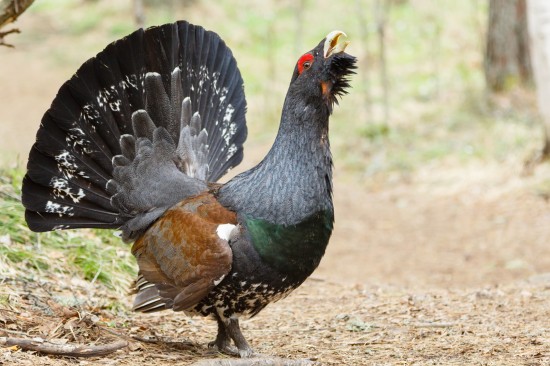
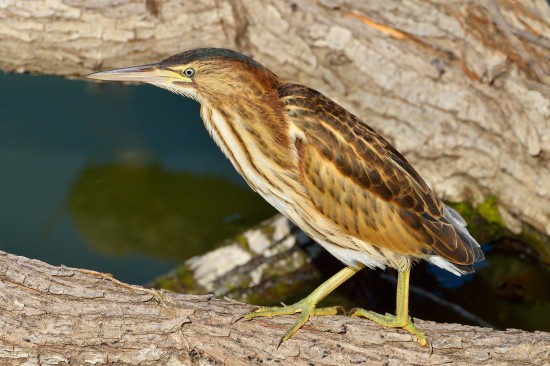
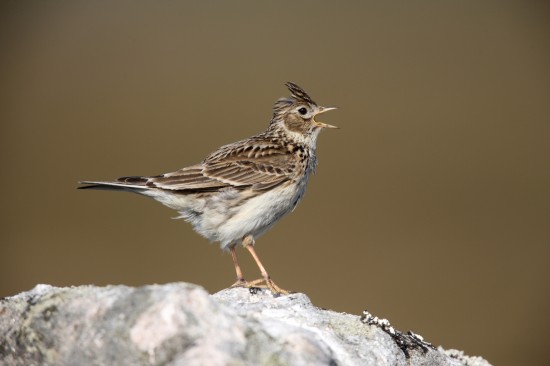
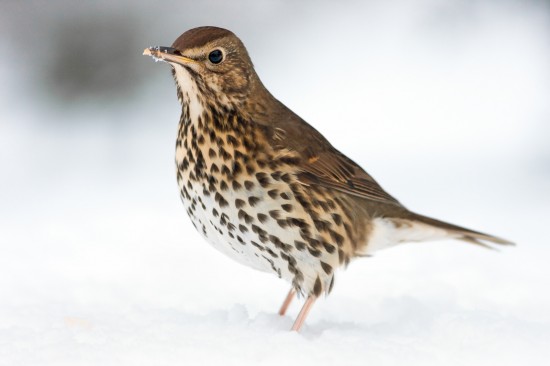
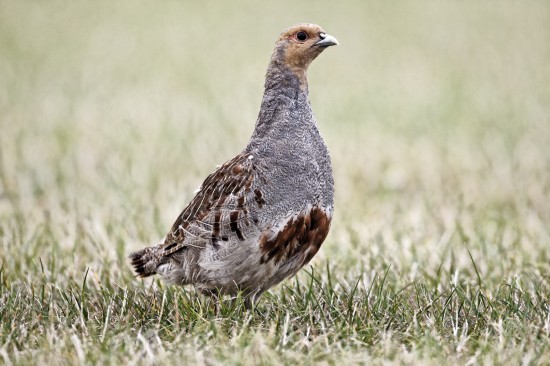
Recently a group of scientists from the UK, USA and other countries compiled a list of the 100 most distinct and rare birds across the world. These are some of the most distinctive birds to be found anywhere and also some of the most likely to face extinction in the near future unless more is done for them.
While none of our British birds were high on the list, there are a number of British birds that are on the IUCN Red List. This is a list compiled to keep track of all species numbers and help focus attention on the most endangered. So who are the most endangered birds in Britain?
The western capercaillie (Tetrao urogallus) is the largest member of the grouse family that is known for its elaborate mating displays. It lives across Europe and central Asia usually in mature conifer forests and was once found in the taiga forests of northern Eurasia. At one point, it was extinct in Scotland but a reintroduction programme bringing birds from Sweden has once more established it. It died out in Ireland in the 18th century and is endangered in Germany, where it was once common.
The main reason this bird is endangered is the loss of the habitat where it lives. Diverse native forests across the country have been removed in favour of single-species plantations to be used for timber. Another threat to them are the fences erected to keep deer away from the new trees, which they often collided with. An imbalance in the predators that hunt these birds is another issue: there are a lot more small predators such as foxes because there are no big predators such as the grey wolf.
The Scottish population, where they are found in the UK, plummeted from 10,000 pairs in the 1960s to less than 1000 birds in 1999. At this point, the RSPB stepped in and, working with other organisation, have worked tirelessly to help stabilise the population.
The Great Bittern (Botarus stellaris) is a member of the heron family of birds that lives across Europe and Asia. In the UK, it is mostly found in Lancashire and East Anglia where there are around 40 breeding pairs. The bird has died out in Ireland but a single bird was seen in County Wexford in 2011, giving hopes of a natural repopulation.
These are big birds that stand 69-81cm tall, with a wingspan of 100-130cm. They live in reed beds, stealthily tracking their prey or standing motionless above a water body, waiting for an opportunity. They are expert at blending into their natural environment in an action that has even become known as bitterning. Their call is also distinctive: a foghorn or bull like booming sound that can be heard from as much as three miles away.
The skylark (Alauda arvensis) is an unassuming brown bird with the most fantastic song, which it performs while flying over the fields that is calls home. In the UK, its numbers have been in serious decline over the last 30 years with only 10% of the birds now found to what there was when the survey first began. RSBP studies have shown this is mainly due to changes in farming practises and a small amount due to pesticides.
In the past, cereals were planted in spring, grown through the summer and then harvested in the beginning of autumn. Cereals are now planted in autumn, grown over winter and harvested in early summer. This means that the fields are too full of plants in early summer for the birds to walk among and find food. Farmers are now paid to create a habitat for these birds with ideas including leaving stubble on the fields over winter that are untreated with pesticides and leaving split grain and weeds for the birds to forage. One study in Cambridge using these ideas shows a threefold increase in the population over a six-year period.
Along with the Blackbird, the Song Thrush (Turdus philmelos) is arguably the best singer in the gardens and parks across the country. It is easily recognisable with its cream breast covered with black spots and is found in forests as well as around human areas. Though across the world, populations are doing well, in the UK and the Netherlands, it had come onto the Red List, as there have been a 50% decline in populations.
One of the reasons believed to be behind this decline are changes to farmland. Like the Skylark, they have found changes to crop planting and harvesting difficult to deal with and also the practise of removing hedgerows from farmland has led to a loss of habitat. In the garden, use of poison bait to kill slugs and snails has been suggested to be a possible issue and also a loss of food source as thrush smash the snails shells on hard ground for food. However, this use of roads for this purpose has also seen an increase in the number killed by cars.
The Grey Partridge (Perdix perdix) is a member of the pheasant family and has been introduced across the world for hunting purposes. Despite being solid in their numbers across the world, in Britain their numbers of have seen an alarming drop. In some areas, the population has fallen by as much as 85% in the last 25 years due to loss of breeding habitat and food supplies.
These birds nest on the edge of cereal fields, so face similar problems to Skylarks and Thrush with changing crop patterns. They are seedeaters but when the chicks hatch, for the first 10 days they live solely on insects so if they cannot source these, they will not survive. Various actions plans have been put into place including a Biodiversity Action Plan (BAP) and a Conservation headlands. Meanwhile in Ireland, the species is nearly totally confined to the Lough Boora reserve though numbers have now been boosted up to around 900 birds.
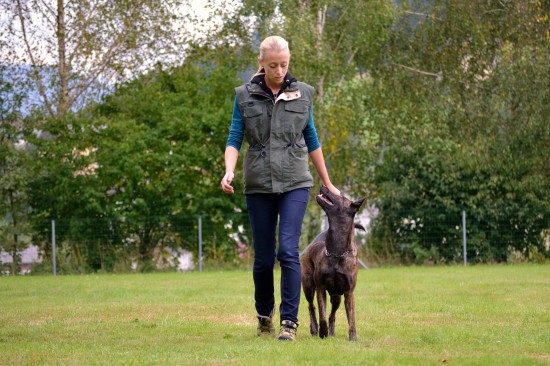 Canine Behaviourism - What Is It?
Canine Behaviouri
Canine Behaviourism - What Is It?
Canine Behaviouri
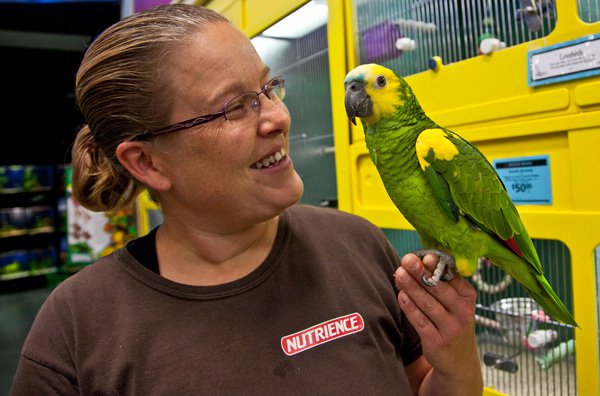 Steps That Would Find You The Right Pet Sitter
Steps That Would Find You The Right Pet Sitter
Steps That Would Find You The Right Pet Sitter
Steps That Would Find You The Right Pet Sitter
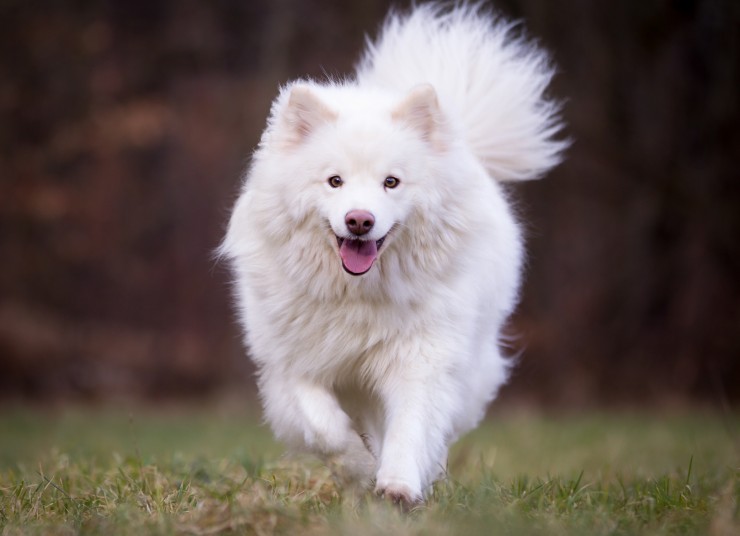 Is A Finnish Lapphund The Right Dog For You?
Is A Finnish Lapp
Is A Finnish Lapphund The Right Dog For You?
Is A Finnish Lapp
 How To Keep An Old English Sheepdogs Coat Looking Good
How To Keep An Ol
How To Keep An Old English Sheepdogs Coat Looking Good
How To Keep An Ol
 Wooden Urns for Ashes
Wooden Urns for Ashes
So, losing your pet can
Wooden Urns for Ashes
Wooden Urns for Ashes
So, losing your pet can
Copyright © 2005-2016 Pet Information All Rights Reserved
Contact us: www162date@outlook.com